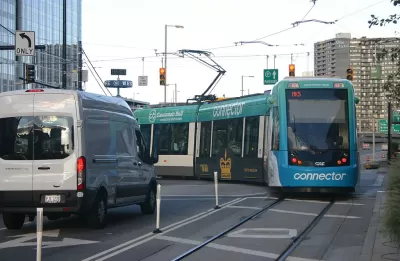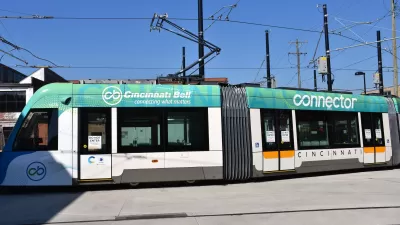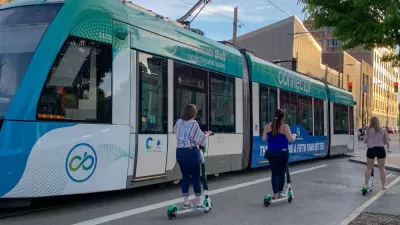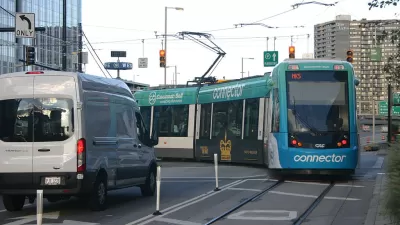Mechanical failures and understaffing have contributed to plummeting ridership for the Cincinnati Bell Connector.

Ridership for the Cincinnati Bell Connector streetcar is half of what it was in 2017 according to reporting from writes Sharon Coolidge in the Cincinnati Enquirer. The system has problems with maintenance and staffing: "Streetcar vehicles built by manufacturer CAF-USA have so many problems – air compressors, heating, braking, propulsion and power failures – they likely need to be completely rebuilt," Coolidge writes. An already tight budget means the operator which is understaffed is unlikely to offer more attractive pay packages to relieve staffing issues. "Private operator Transdev can't keep staff on hand. The company's situation is complicated by the fact that its portion of the streetcar contract was bid at $3.3 million, less than what it's costing Transdev to operate the system," Coolidge writes.
No one seems to want to take on the issue. The mayor, John Cranley, has been against the project for some time, but was unable to block the project from completion. Agencies associated with the street car have been quick to point fingers at each other, "For instance when the streetcar wasn't operating SORTA directed the media to call the city's spokesman because the issue was related to the cars not working. The city spokesman then said the media should call SORTA because it manages the project," Coolidge reports.
FULL STORY: 5 reasons why the Cincinnati streetcar's numbers are crashing, with no fixes in sight

Alabama: Trump Terminates Settlements for Black Communities Harmed By Raw Sewage
Trump deemed the landmark civil rights agreement “illegal DEI and environmental justice policy.”

Planetizen Federal Action Tracker
A weekly monitor of how Trump’s orders and actions are impacting planners and planning in America.

The 120 Year Old Tiny Home Villages That Sheltered San Francisco’s Earthquake Refugees
More than a century ago, San Francisco mobilized to house thousands of residents displaced by the 1906 earthquake. Could their strategy offer a model for the present?

LA’s Tree Emergency Goes Beyond Vandalism
After a vandal destroyed dozens of downtown LA trees, Mayor Karen Bass vowed to replace them. Days later, she slashed the city’s tree budget.

Sacramento Leads Nation With Bus-Mounted Bike Lane Enforcement Cameras
The city is the first to use its bus-mounted traffic enforcement system to cite drivers who park or drive in bike lanes.

Seattle Voters Approve Social Housing Referendum
Voters approved a corporate tax to fund the city’s housing authority despite an opposition campaign funded by Amazon and Microsoft.
Urban Design for Planners 1: Software Tools
This six-course series explores essential urban design concepts using open source software and equips planners with the tools they need to participate fully in the urban design process.
Planning for Universal Design
Learn the tools for implementing Universal Design in planning regulations.
Ada County Highway District
Clanton & Associates, Inc.
Jessamine County Fiscal Court
Institute for Housing and Urban Development Studies (IHS)
City of Grandview
Harvard GSD Executive Education
Toledo-Lucas County Plan Commissions
Salt Lake City
NYU Wagner Graduate School of Public Service





























